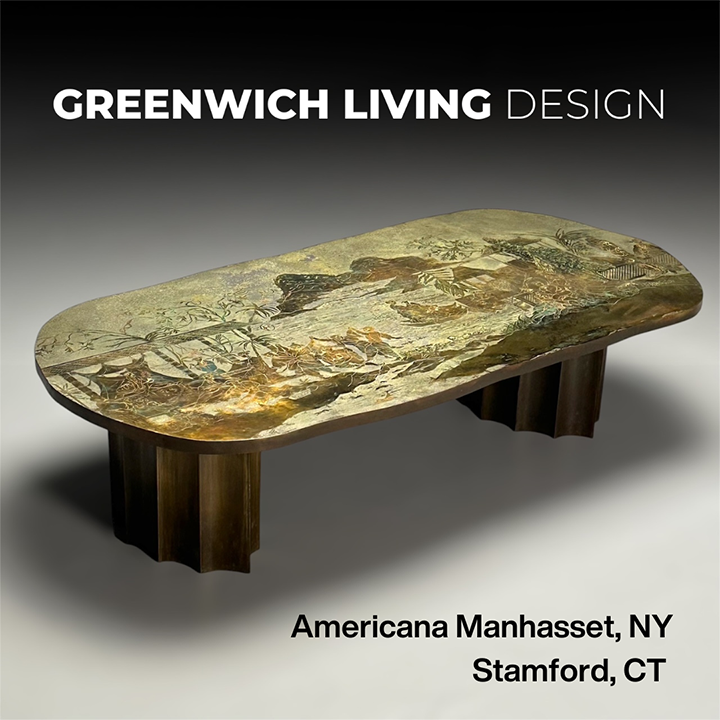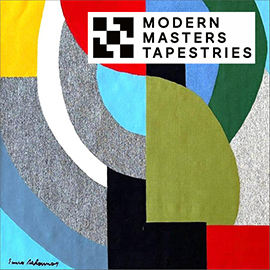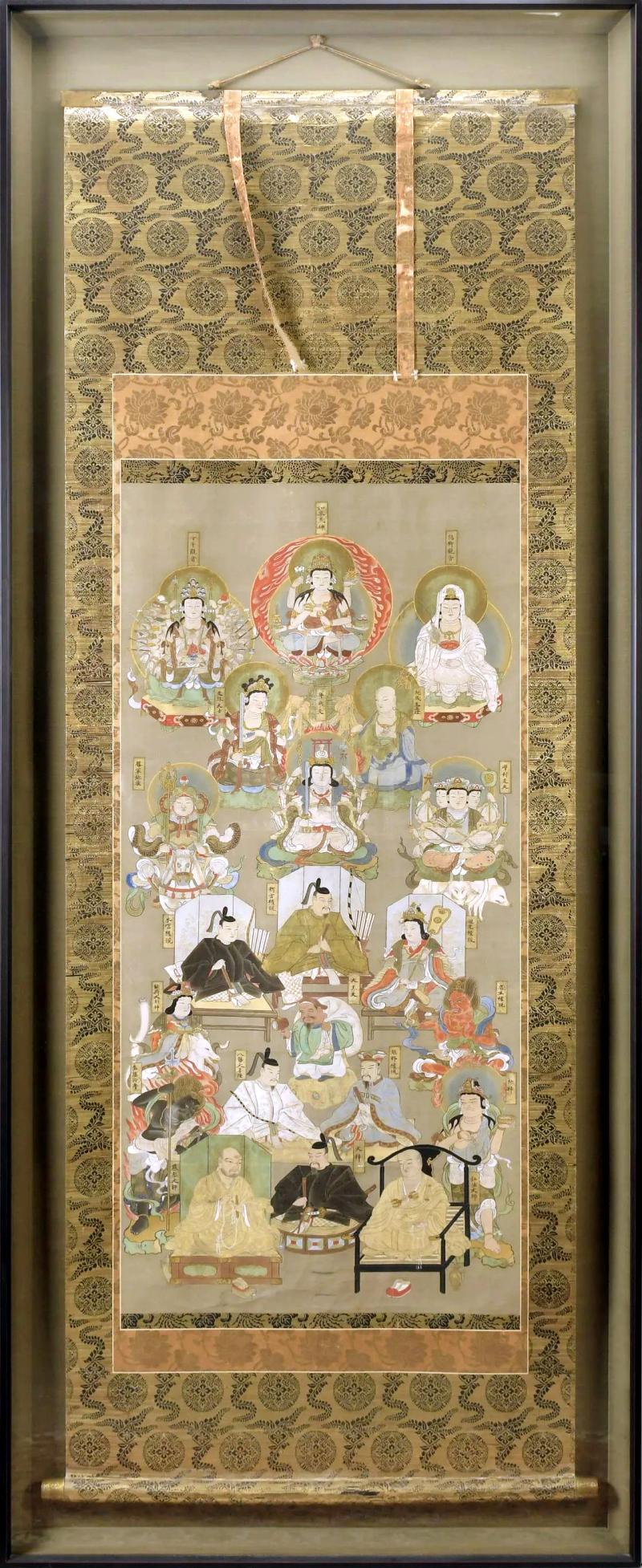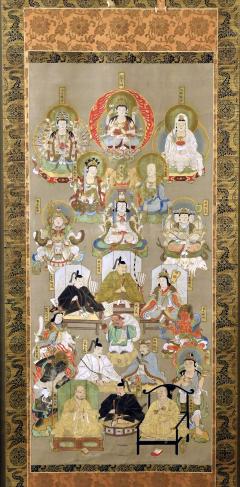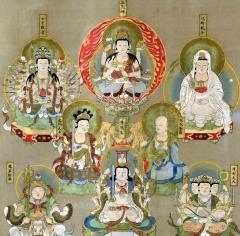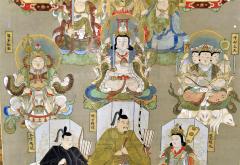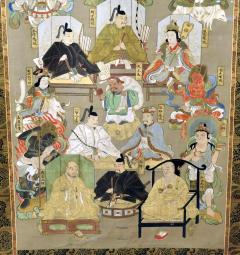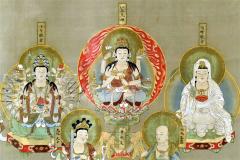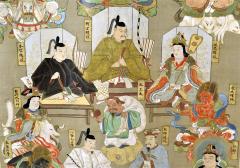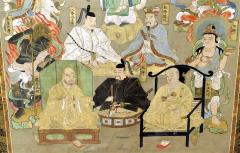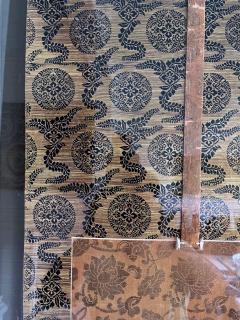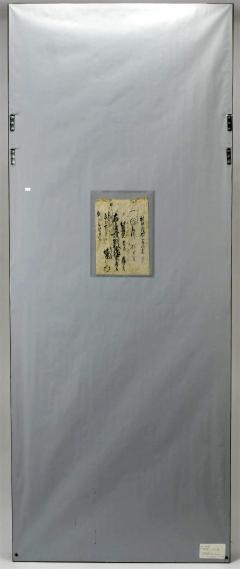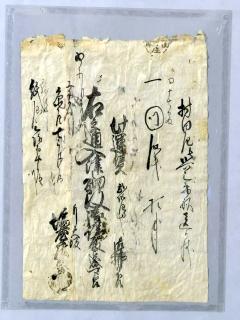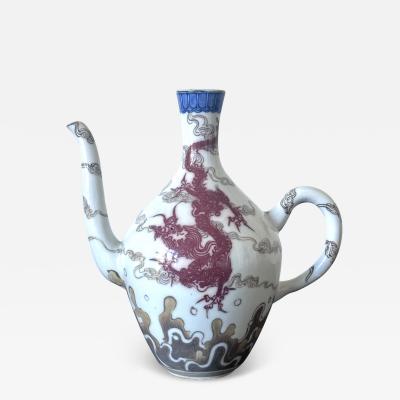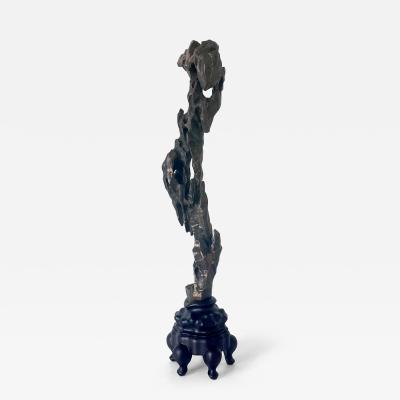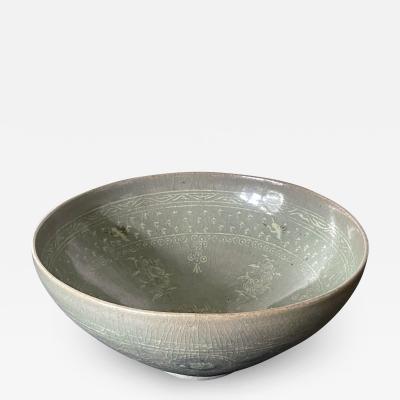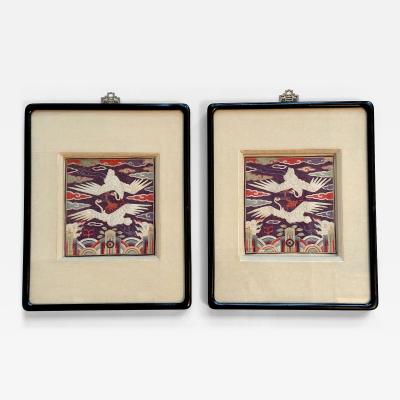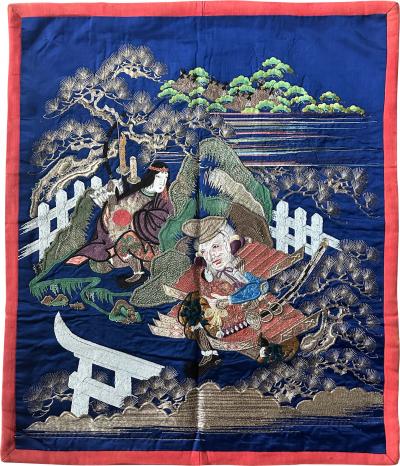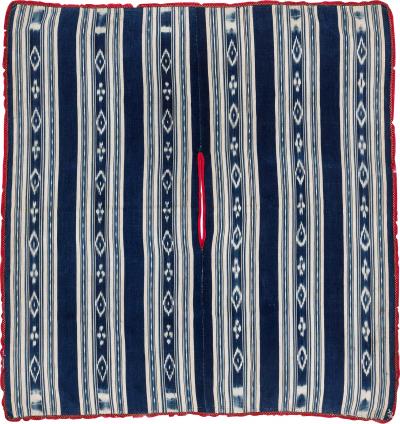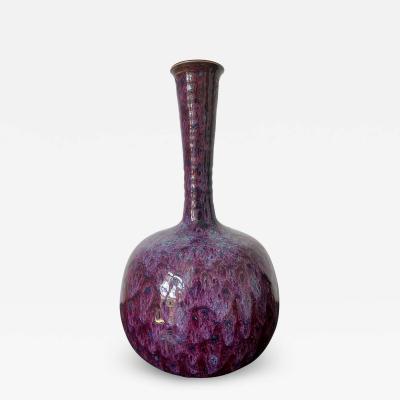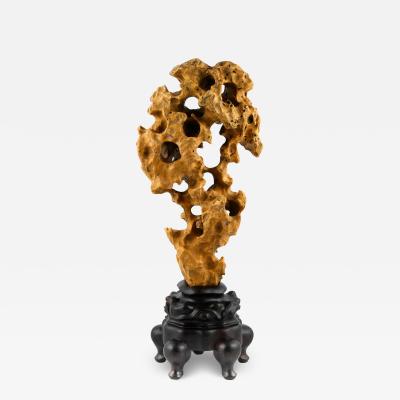Japanese Silk Suijaku Scroll Nyorai-Kojin with Mixed Buddhism and Shinto Deities
-
Description
A Japanese silk Suijaku hanging scroll beautifully presented in a custom wood shadow box frame from Edo period (circa 18-19th century). The scroll, surmounted on golden brocade was painted in fine details with gouache, ink and gold powder highlight, served as a Suijaku mandala for the worshippers. Honji Suijaku is a complicated religious concept uniquely developed in Japan. It mixed and hybrid the Buddism deities with native shinto spirits (known as Kami), which were seen as local manifestations (the suijaku, literally means a "trace") of Buddhist deities (the honji literally the original ground). The original idea may lie with the synergetic strategy to spread Buddism by making it more relatable to the local population who had already worshiped Shinto gods. The paradigm, adopted in the 10th century from an orignal Chinese concept, remained a defining feature of Japanese religious life up to the end of the Edo period (1868). Instead of being confined to deities, its application was often extended to historical figures as shown on this scroll.
This long hanging scroll depicts an arrangement of 21 figures including Buddhism and Shinto deities as well as two historical figures on the bottom. Each figure was name-tagged in Kanji for easy identification by the worshippers. It was used in the temple or shrine so that when the worshipper prayed in front the mandala, they prayed simultaneously to all the deities.
On the very top, sits Nyorai-Kojin, a hybrid deity of Nyorai Buddha and Kojin, the kaki for fire, stove and kitchen. From the top to bottom and left to right, here is the list of the deities: Kanon with Thousand Hands, Kanon with Willow Branch, Monju Bosatsu, Jizo, Shengjun Jizo, Benzaiten, Marishiten(Marici), Hongu Gongen (literally means the Buddhist divinity's manifestation in the form of a provisional Shinto deity), New Palace Gongen, Taiko Gongen, Inari (Gods of grains and harvest), Daikokuten (Mahakala, god of wealth and fortune), Zouwang Gongen, Ucchusma, Hachiman God (God of War), Kumano Gongen. Master Cihui (912-985 historical figure), Tenjin (Patron kami of intellectual scholarship) and lastly Master Kobo (Kukai, 774-835, historical figure and founder of Shingon School).
Cursive writing in ink on old paper affixed verso (undeciphered). Image only measures approx. 44" x 20", scroll approx. 76" x 28", with frame 85.5" x 33.5". -
More Information
Origin: Japan Period: 19th Century Materials: silk, wood Condition: Good. Wear consistent with age and use. Antique scroll framed, appears in fine condition with minor wear and scattered toning as expected. Not examined out of the frame. Creation Date: early 19th century Styles / Movements: Bespoke, Asian, Traditional Patterns: Asian/Oriental Incollect Reference #: 639950 -
Dimensions
W. 33.5 in; H. 85.5 in; D. 3 in; W. 85.09 cm; H. 217.17 cm; D. 7.62 cm;
Message from Seller:
Tishu, based in Atlanta, GA, offers a diverse collection ranging from Neolithic art to 20th-century collectibles, with a focus on Mid-century design, Japanese and Korean art, Asian textiles, and Contemporary Aboriginal art. Driven by a passion for timeless beauty, the gallery is open by appointment only and offers works that span 5,000 years of history. Reach them at 305-400-0561 or tishu@tishugallery.com.




